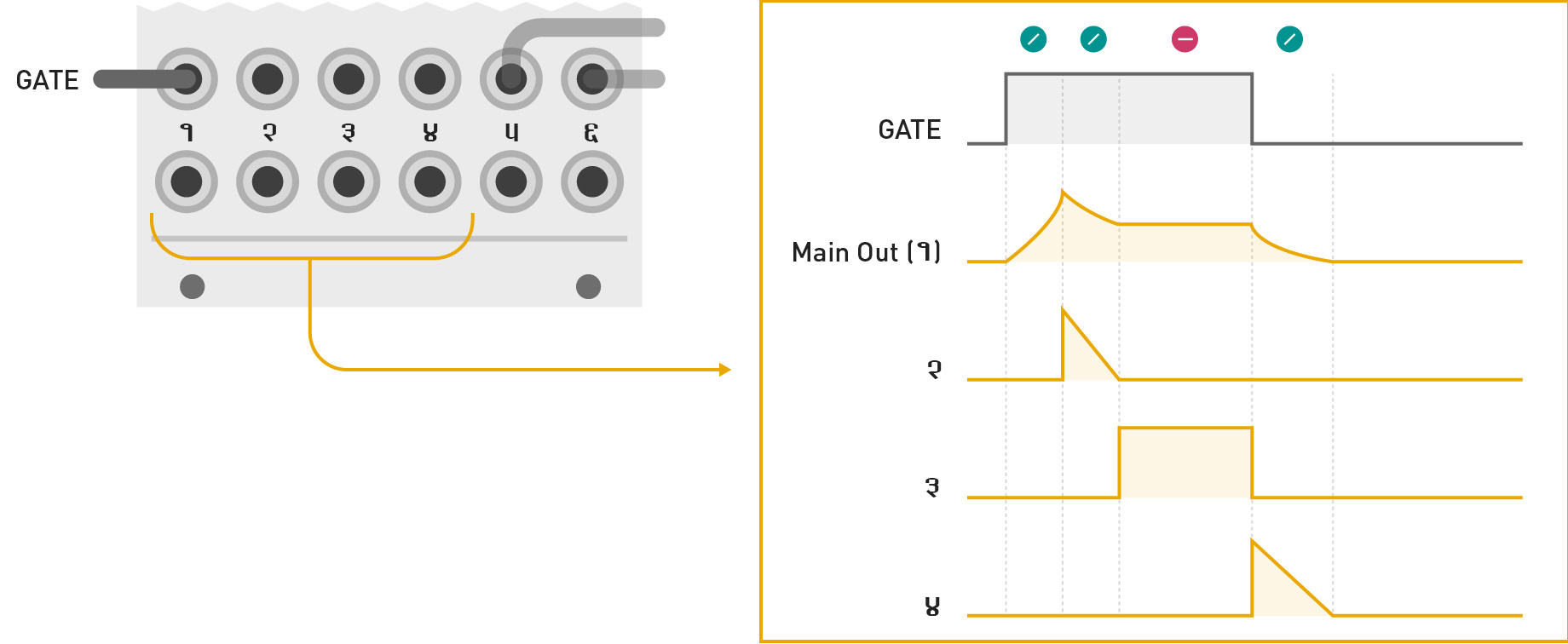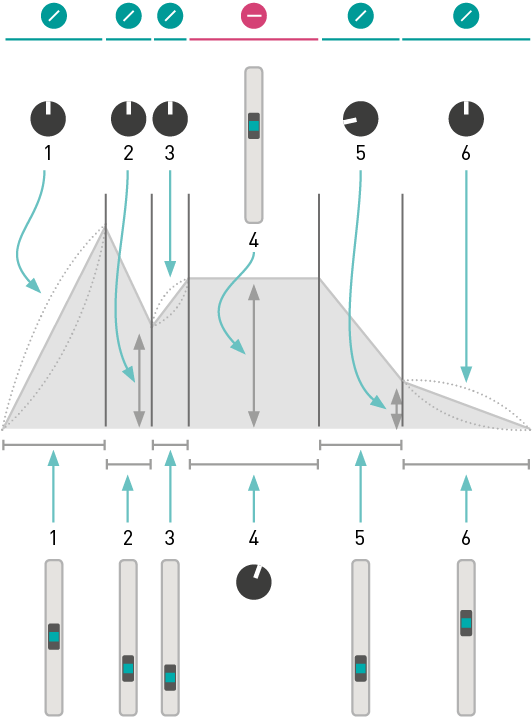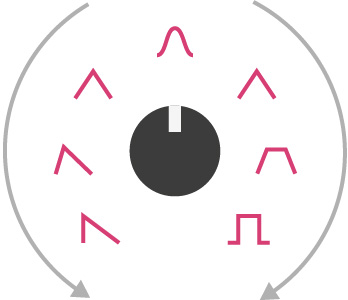Stages
Stages is a versatile 6-segment signal generator by Mutable Instruments.
Some of this cheat-sheet is derived from the Mutable Instruments website, which is licensed CC-BY-SA-3.0.
Links
Stages HomeStages Manual
Stages is a versatile 6-segment signal generator by Mutable Instruments.
Some of this cheat-sheet is derived from the Mutable Instruments website, which is licensed CC-BY-SA-3.0.
Complex modulations are built by grouping many segments into one modulation signal.
Inserting a jack in a GATE input marks the beginning of a group of segments. All unpatched segments at its right become part of this group.
The first output of a group generates the envelope signal itself. The following outputs generate segment activity signals – ramps going from 8V to 0V whenever the corresponding segment is active.


|
|
Curve (Accelerating -> Linear -> Decelerating) |
| Mode Green - Ramp | |
| Ramp Time | |
| Ramp Time | |
|
|
Trigger |
|
|
|
|
Glide Time |
| Mode Orange - Step | |
| Target Voltage | |
| Target Voltage | |
|
|
Trigger |
|
|
Step segments glide to the target voltage, and remain there until a trigger is received.
When used as a single segment, Step functions as a sample and hold.
|
|
Hold Time |
| Mode Red - Hold | |
| Target voltage | |
| Target voltage | |
|
|
Trigger |
|
|
|
|
Curve (Accelerating -> Linear -> Decelerating) |
| Mode Green - Ramp | |
| Ramp Time | |
| Ramp Time | |
|
|
Trigger |
|
|
|
|
Shape (see below) |
| Mode Flashing Green - LFO | |
| LFO Speed | |
| LFO Speed | |
|
|
Clock (when patched) |
|
|
A looping single-segment Ramp acts as an LFO. The top potentiometer controls LFO shapes (see below).
When a clock source is patched into the Gate input, the LFO is tempo-synced. Stages can sync to a non-linear gate pattern as well.

|
|
Glide amount |
| Mode Orange - Step | |
| Voltage | |
| Voltage | |
|
|
Leave unpatched |
|
|
|
|
Glide amount |
| Mode Orange - Step | |
| Voltage | |
| Voltage | |
|
|
Trigger |
|
|
|
|
Delay Time |
| Mode Red - Hold | |
| Voltage | |
| Voltage | |
|
|
Leave unpatched |
|
|
|
|
Pulse Duration |
| Mode Red - Hold | |
| Pulse voltage | |
| Pulse voltage | |
|
|
Trigger/Gate |
|
|